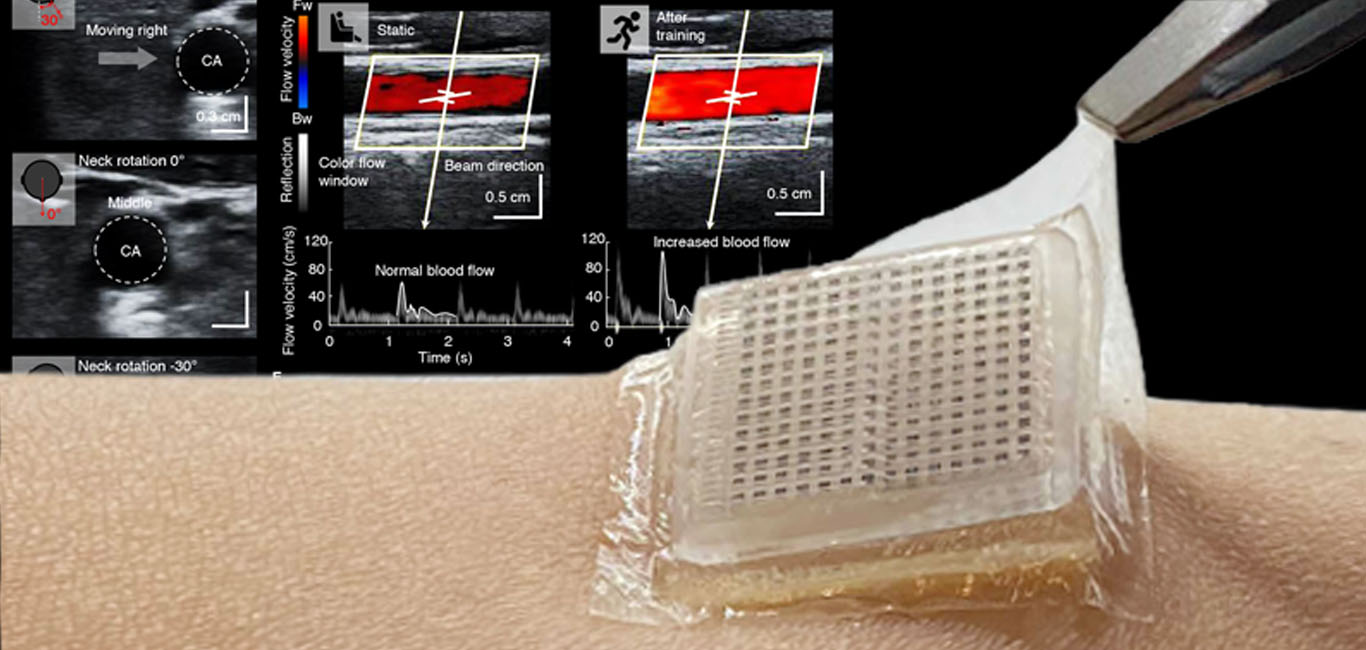
Imagine seeing the blood rushing through your veins as you run, or watching your baby grow while still in the womb. Sounds like something out of science fiction, sure. But a device being built by a team of researchers at Massachusetts Institute of Technology (MIT) could soon make this a reality.
The BioAdhesive Ultrasound, or BAUS in short, can be stuck to any part of the body and produce high-resolution images using ultrasound – an imaging technique often used to monitor pregnancies.
Getting an ultrasound today requires a visit to a hospital where a trained technician is needed to hook you up to bulky device that can capture images. This, too, yields monitoring only for a couple of seconds to a few minutes at best.
Dr Xuanhe Zhao, an MIT professor heading the team that built BAUS, says the device promises to produce these visuals in real-time and for hours on end. “It may potentially revolutionalise two fields: Medical imaging and wearable devices,” he says.
Developed in the 1950s, ultrasound is a non-invasive diagnostic tool that works on the concept of echolocation. High frequency sound waves are emitted from a transducer (or probe) that are transmitted to the body through a hydro-based gel. These sound waves then travel through the body and bounce off obstructions (our internal organs). The waves are received and converted into an image that we can see on a screen.
Explorations to make portable and wearable ultrasound devices isn’t new. Previous designs have had flexible and stretchable probes but produced low-resolution images. Moreover, there has been a challenge of durability that few have been able to solve, until now.
Zhao’s team targeted these limitations by creating a rigid transducer adhered to the skin by a hybrid of hydrogel sandwiched between a soft, tough and anti-dehydrating bio-adhesive layer. This combination allows for dynamic body movement and stretchability of the skin without getting detached.
The team at MIT evaluated the comfort and function of the patches on 15 volunteers who attached it on different body parts, including arm, neck, chest, and waist— for 48 hours.
Dr Zhao spoke with Happiest Health on the benefits of the 48-hour visualisation. “Current medical imaging is usually taken in hospitals for short terms, such as a few seconds. BAUS provides long-term, continuous, wearable imaging of diverse internal organs such as the heart, lung, blood vessels, and muscles,” Zhao says.
His team backed up the claim through their study. 14 of the 15 volunteers reported no itchiness or skin reaction to the adhesive. It was also adjusted to different frequencies to image the lung, the stomach, the bicep muscle along with the blood vessels. The participants were made to carry out high intensity exercises, and the patch showed strong resilience to temperature and movement.
“It will add a time dimension to medical imaging and an imaging dimension to wearable technology,” he added.
Similar to wearable devices for ECG, a professional would not be required to hold the probe in place, allowing for visualisation of deep internal tissues like muscle, heart, and even arteries while the patient is in motion. His team reported high resolution images for a moving neck, where the jugular and carotid artery (main blood vessels connecting the heart to the brain) can be seen in a continuous image.
As to timeline for when it could reach market, the team says it doesn’t know when that could be just yet. “But now we can provide imaging data that experts can interpret,” Xiaoyu Chen, a member of the developing BAUS at MIT said.
“With imaging, we might be able to capture the moment in a workout before overuse and stop before muscles become sore,” Chen added.
The stickers are still under research and development, before they can be used frequently for monitoring. At this juncture BAUS have to be connected to wires and a translation device for imaging. However, Zhao intends to make it wireless and completely portable.
“We imagine we could have a box of stickers, each designed to image a different location of the body”, says Dr Zhao. He envisions the sticker ultrasounds to be available not only to monitor internal organs, but also tumour progression and foetus development during pregnancy.
Advances such as these could help give us a better understanding of how our body works, while also making diagnosis far more comprehensive. But better still, we might get to see how our bodies actually work right on the screens of our smartphones.


















One Response
Informative article; very well written